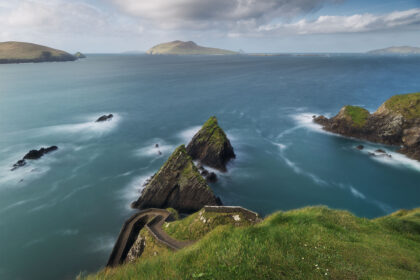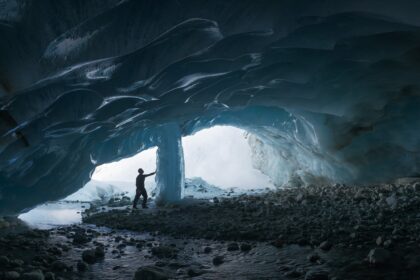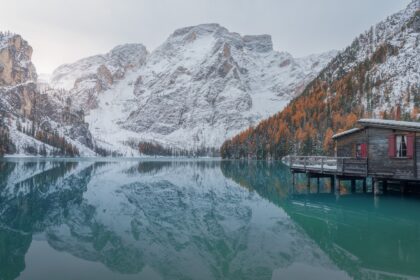Switzerland is both my place of origin and my current place of residence. For a long time, I preferred to travel the world and photograph places that I considered extraordinary. But Switzerland is beautiful and perfect for landscape photography.
In this blog post, I showcase my four favorite waterfalls in French-speaking Switzerland, all of which are easily accessible and perfect for long exposure landscape photography. These waterfalls are hidden away in the cantons of Vaud and Fribourg. They can all be reached in just a few minutes on foot, so you can return to see them in any season. I’ll share my camera settings below for your inspiration.
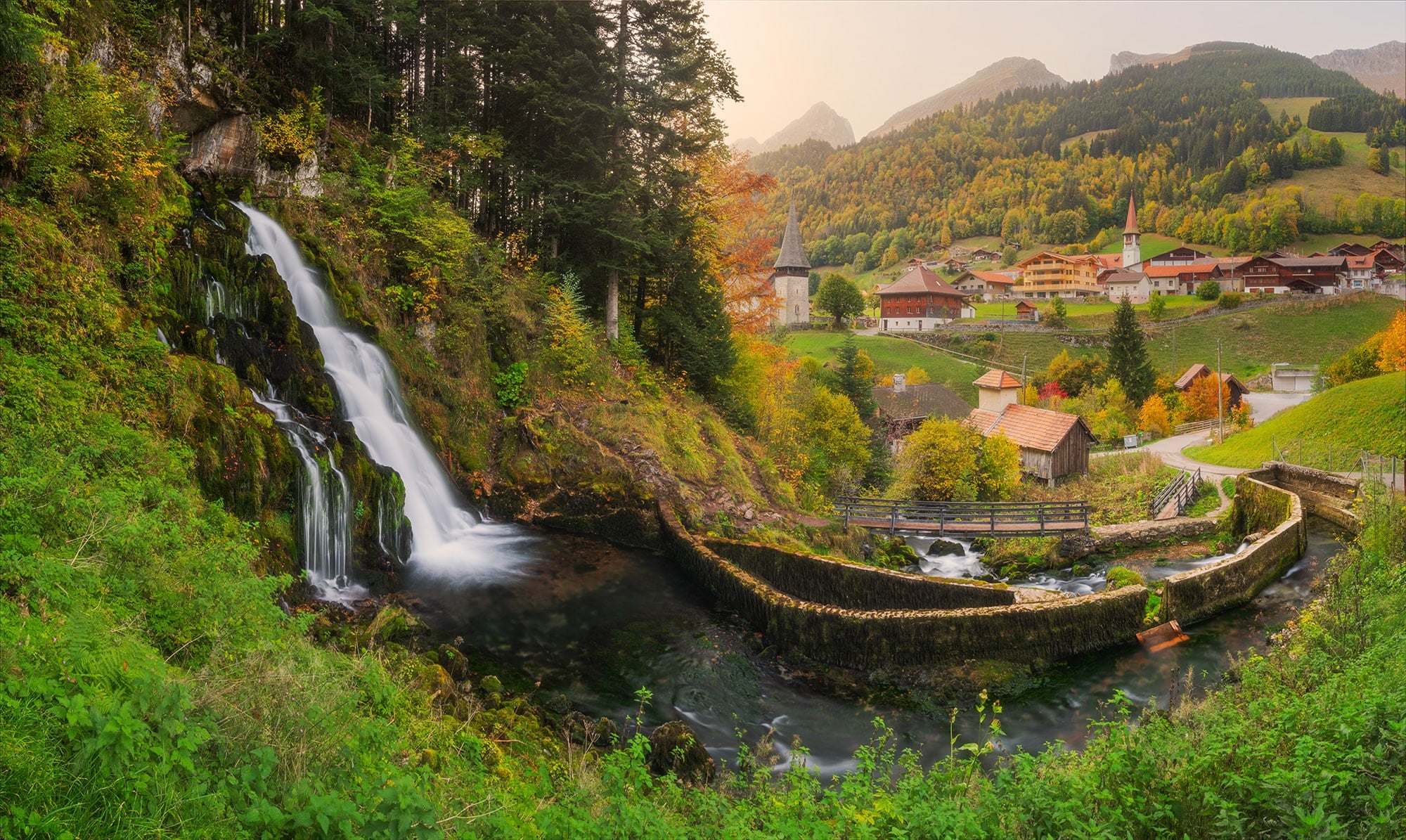
Landscape photography : Jaun waterfall
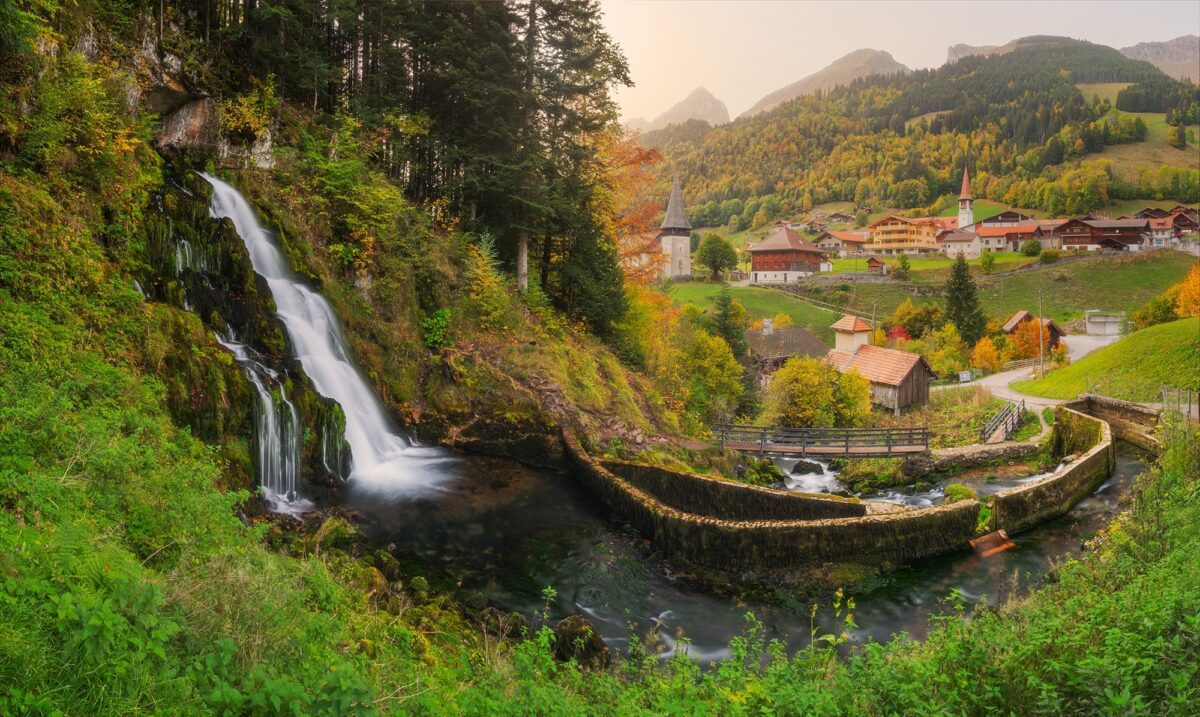
Long undiscovered and steeped in secrecy, the Jaun Waterfall is a quintessential feature of the Fribourg canton, offering an ideal setting for landscape photographers.
Nestled in the highlands of Fribourg, in Switzerland, within the village of Jaun itself, this natural wonder stands in serene contrast to the village church and the charming wooden houses that define the area’s mountainous character.
➜ Car park
➜ Full information on Jaun Tourismus
How I photographed the Jaun waterfall
To capture the Jaun waterfall, I opted for a panorama combined with a long exposure. This allowed me to include the waterfall with the moving water and the village of Jaun in my image.
To get the water out of focus, I put my camera on a tripod and used a long pause. To remove the reflections in the pond, I added a Hoya polarising filter.
My gear
Nikon D810, Nikkor 24-70mm f/2.8, Hoya polarising filter, Manfrotto tripod
Camera settings
ISO 31, F/22, 5.0s
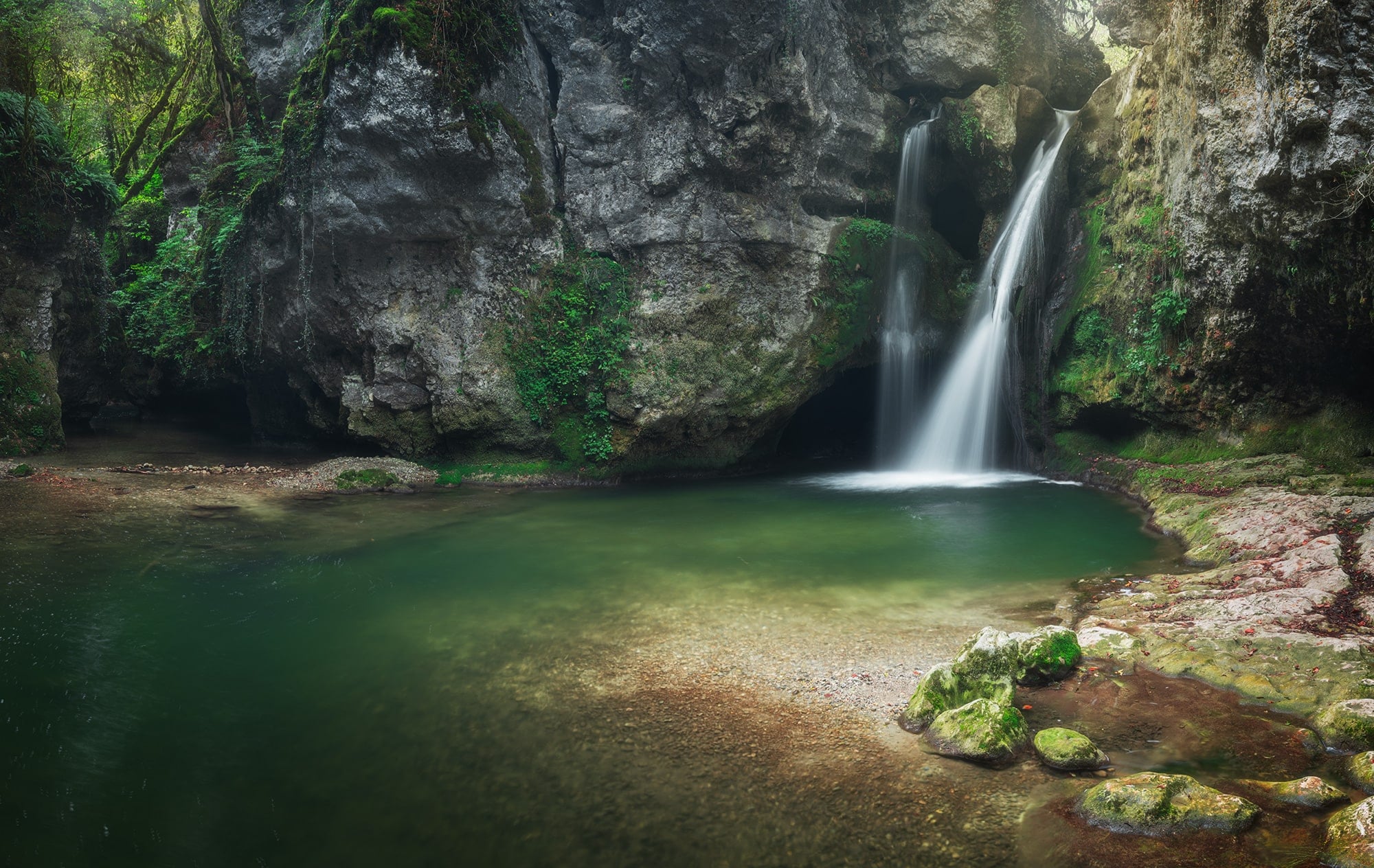
Landscape photography : Tine du Conflens waterfall
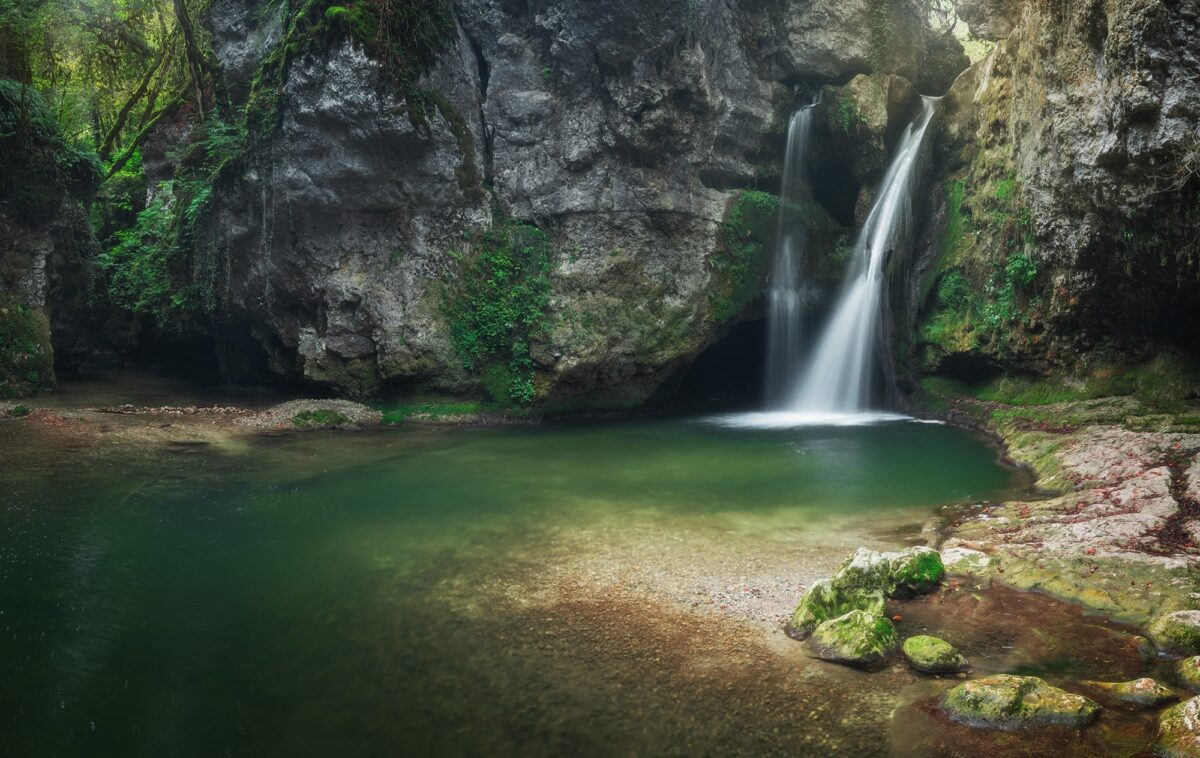
The Tine de Conflens is a beautiful waterfall that cascades into a rocky cirque, adorned with moss. The surroundings create the impression of being in a magical place, reminiscent of a fairytale.
The waterfall is located near the village of La Sarraz in the canton of Vaud, in Switzerland. A small car park is situated on the edge of the forest between La Sarraz and Chevilly. From there, simply follow the narrow path leading down to the waterfall. The walk takes approximately fifteen minutes.
➜ Car park
➜ Hike info
How I photographed the Tine de Conflens waterfall
This panorama is made of three vertical photos taken from the highest rocks on the water’s edge. I particularly like the part on the left, where the rocks are covered in moss. I wanted it to be part of my photograph, which is why I opted for a panorama.
To achieve a smooth effect on the waterfall, I used an ND64 filter to lengthen the exposure time. Additionally, I employed a Hoya polarizing filter to eliminate surface reflections on the water.
My gear
Nikon D810, Nikkor 24-70mm f/2.8, Hoya polarising filter, ND64 filter, Manfrotto tripod
Camera settings
ISO 64, F/11, 2.0s
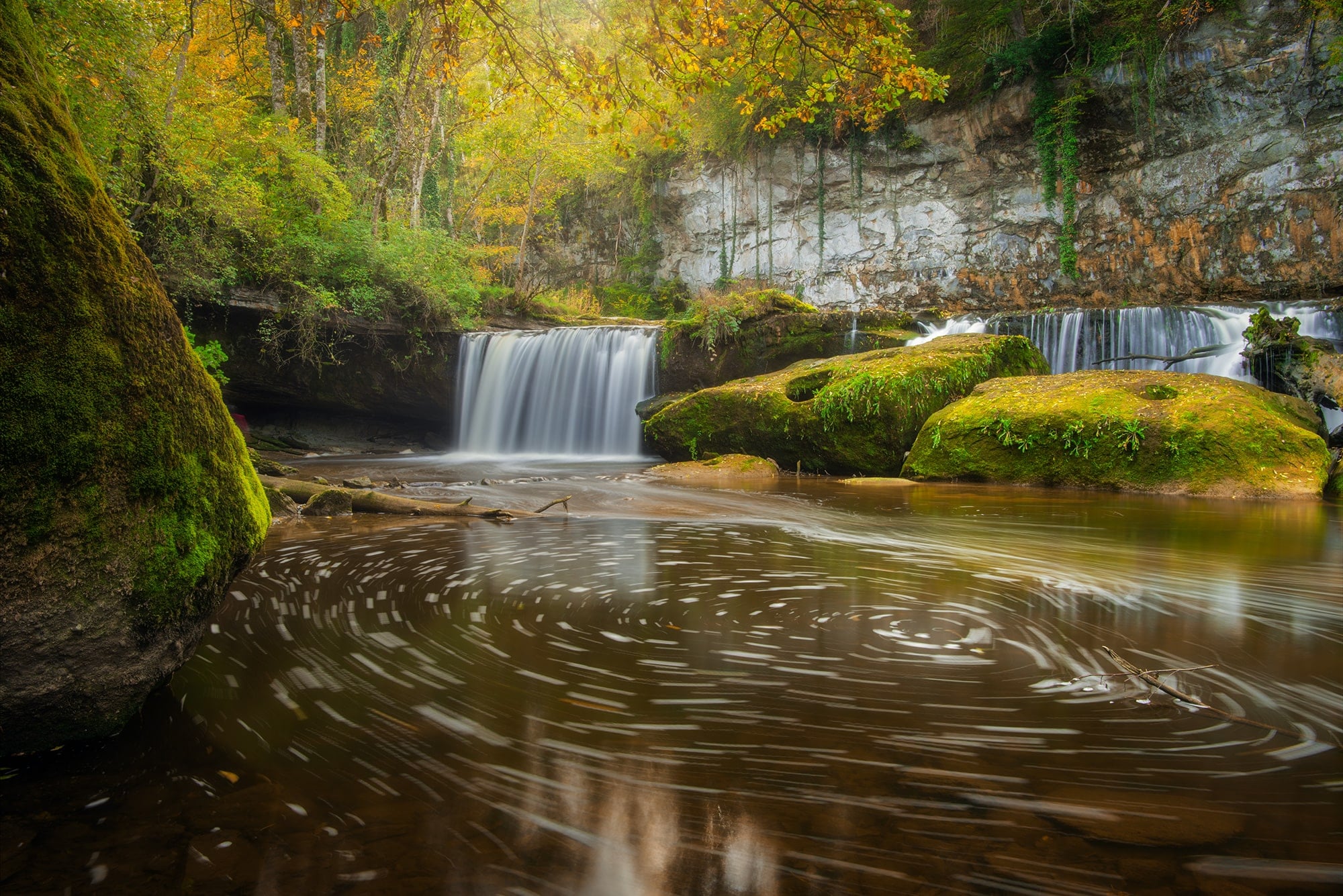
Landscape photography : Chavanettes Falls
The Chavanettes Falls are not very high, but they are quite wide, which makes for some lovely photographs. The water level can vary considerably depending on the rainfall, so I recommend visiting this place several times to really capture its special atmosphere.
The car park is located on the edge of the forest in the village of Rue, in the canton of Fribourg, in Switzerland. However, parking is not permitted between 31 May and 30 September. If you want to get there in summer, you’ll have to walk further.
➜ Winter car park
➜ During summer, you must parc your car in the Village of Rue
How I photographed the Chavanette falls
The Chavanette falls are unusual in that they are quite low but wide. That day, the forest was beautifully coloured and there was a little moss on the water. As the water level was low, we could get close to the river and this moss-covered rock. I found it an interesting foreground for my composition.
To create movement in the water of the waterfall and the river, I used a long exposure time. Furthermore, I added a polarizing filter to my lens. This filter removes some of the reflections on the water. The small white lines represent the white foam that moves with the water. I particularly appreciate the eye-catching circle it forms.
My gear
Nikon D810, Nikkor 24-70mm f/2.8, Hoya polarising filter, Manfrotto tripod
Camera settings
ISO 31, F/22, 3.0s
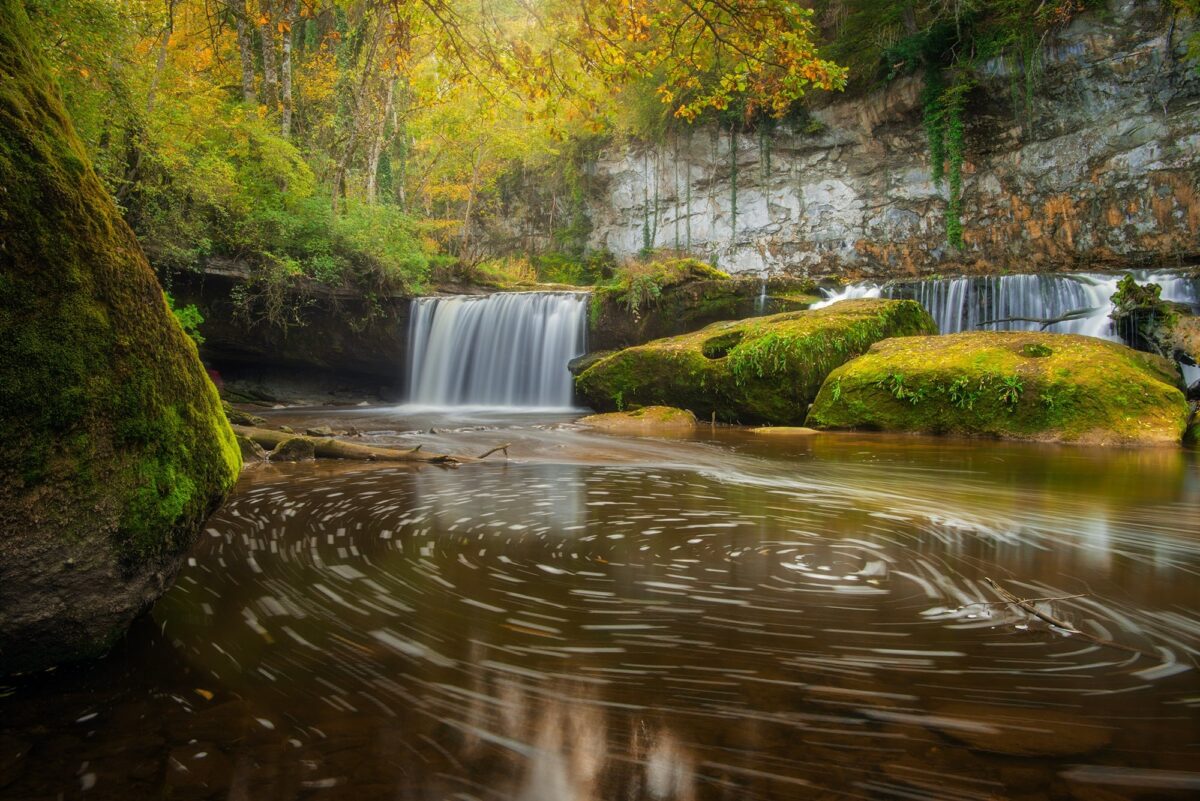
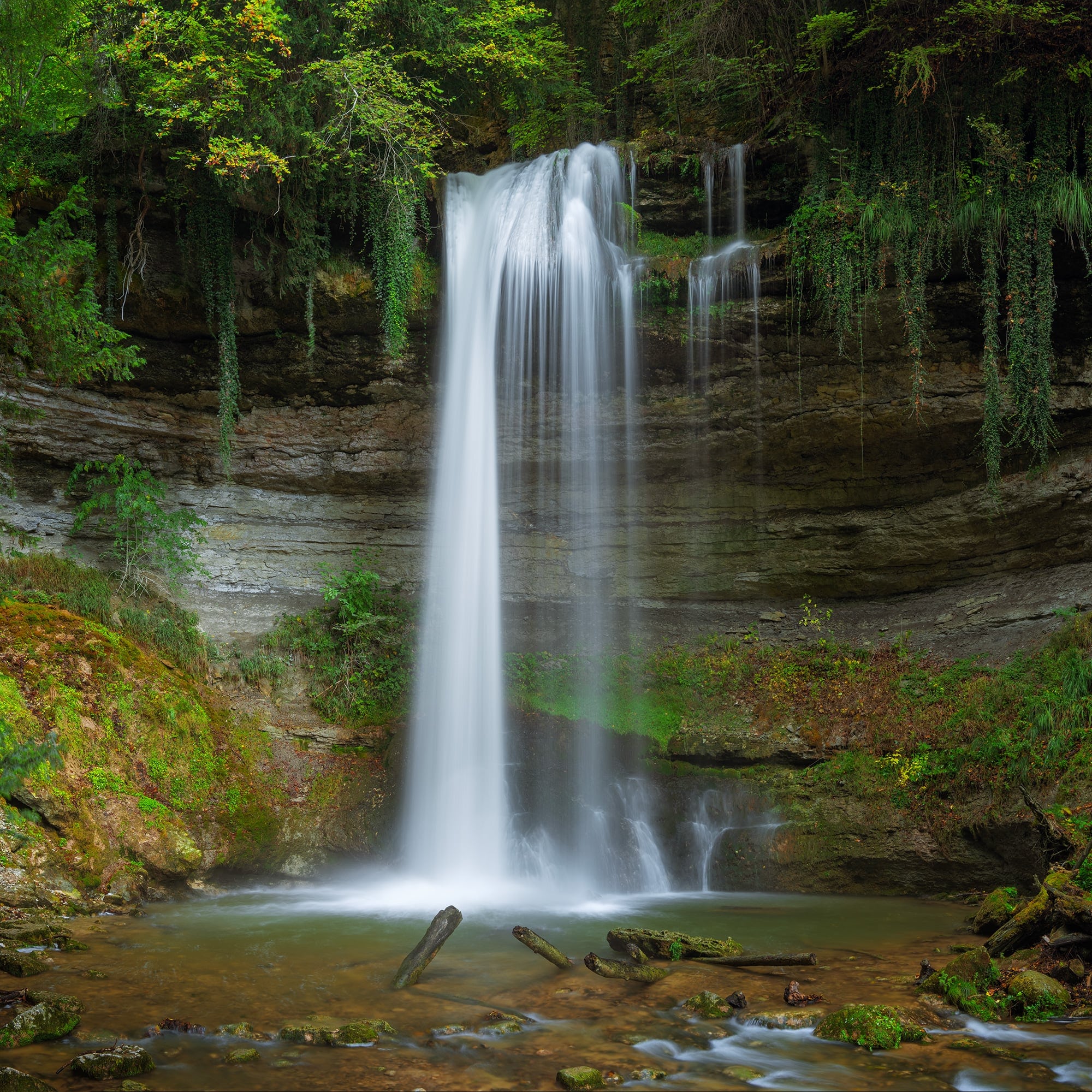
Landscape photography : Dard waterfall
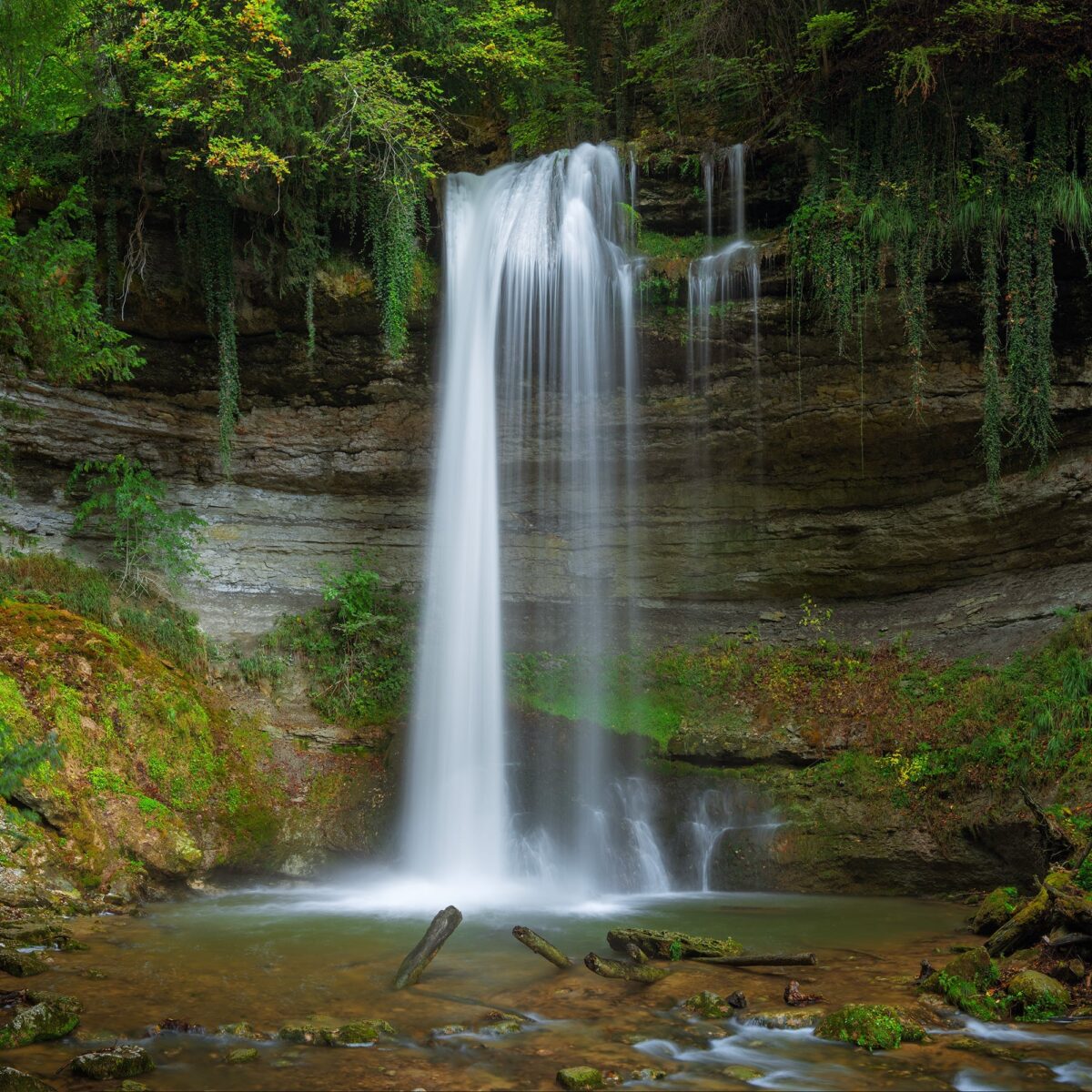
The Cascade du Dard is another little wonder of French-speaking Switzerland. It lies on the edge of the village of Croy-Romainmôtier, also in the canton of Vaud. It is known throughout the region for its height and beauty. It flows directly into a vertiginous rocky cirque.
The access to the waterfall is via the village of Croy, but you cannot cross it by car. You can park at the entrance to the village and follow the footpath through the forest. The whole walk takes around 20 to 30 minutes, depending on your pace.
How I photographed the Dard waterfall
Personally, I find the best viewpoint is at the foot of the waterfall. That’s where you can see the whole waterfall, unobstructed by tree branches.
To create this square format, I had to combine two vertical. My lens wasn’t wide enough to photograph the waterfall in a single shot.
Here too, I used a polarising filter combined with an ND64 filter, which allowed me to take a long break and eliminate the unsightly reflections on the water.
My gear
Nikon D810, Nikkor 24-70mm f/2.8, Hoya polarising filter, Manfrotto tripod
Camera settings
ISO 64, F/14, 1.30/s
Published on 27.04.2024 by Jennifer Esseiva
